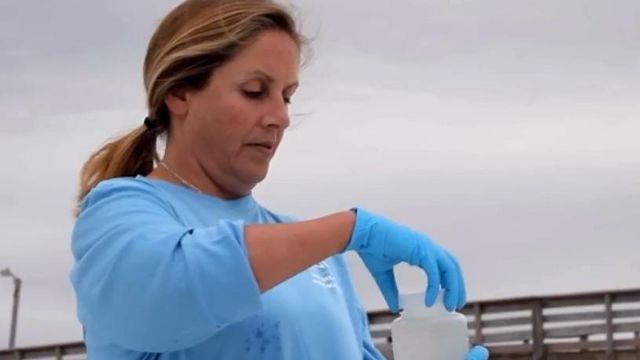Beachgoers beware: Climate change may be increasing fecal bacteria at North Carolina beaches
Aging storm drains along the east coast are further deteriorating due to rising sea levels and higher high tides that push saltwater into the pipes, corroding them and mixing sewage with stormwater runoff.
Posted — UpdatedNorth Carolina’s beaches could be brimming with bacteria due to aging infrastructure. Researchers at the Institute of Marine Sciences in Morehead City said they are seeing more fecal matter indicator bacteria in ocean water.
In Beaufort, nearly every high tide sends saltwater into the area’s storm drains. The saltwater can overwhelm the system, especially after rain events. Other coastal towns are also seeing problems with stormwater and sewage drain systems filling with and being corroded by saltwater. This only worsens during rain events, sending contaminated water flowing back into the sea.
University of North Carolina at Chapel Hill professor and microbiologist Rachel Noble said the E. coli and fecal indicator bacteria levels are among the highest she’s ever seen in some North Carolina coastal communities.
“It really makes you kind of stop and think that our infrastructure is already struggling and during extreme events," Noble said. "These situations are only going to get worse, unfortunately."
Noble said rising sea levels and higher high tides caused by climate change coupled with more coastal development are overloading stormwater systems that can spill sewage into swimming waters. Rising temperatures can also give bacteria more opportunities to thrive.
“Those bacteria can persist for much longer periods of time in those systems, and allow someone who comes in contact with them or someone who ingest them to become sick,” Noble said.
The state tests for fecal indicator bacteria but the results typically take 48 hours, so swimmers may be in contaminated water before an advisory is released or avoid swimming long after the water is back to normal levels again. Noble and her team have created a faster test that has been adopted by cities including San Diego, but most North Carolina towns still use slow methods.
One gleeful young swimmer shuddered in horror at the thought of fecal matter in the ocean water.
“Maybe I just won’t swim anymore,” said 10-year-old Emma Grant.
Grant comes with her family to the beach every year, but her mom says she’s worried about the water quality in recent years after two troublesome ear infections in a row.
“I don’t check the swim guide, but we do know the rule about not swimming after a storm because of the storm runoff… it’s pretty gross,” said mom Jennifer Grant.
Noble said it’s a good idea to avoid swimming in oceans or lakes 24 hours after rain events. She advised sticking to a treated pool during that time.
Monitoring toxin levels
Related Topics
• Credits
Copyright 2024 by Capitol Broadcasting Company. All rights reserved. This material may not be published, broadcast, rewritten or redistributed.






